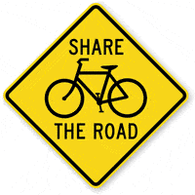Bike-Friendly Cities: Once Common in the US
19th Jan 2018
Copenhagen holds the title of the most bike-friendly city in the world. In the top 20, only one US city made the list, Minneapolis. This may be surprising considering Minneapolis has bitterly cold winters. It made the list because of its 120 miles of on-street bike lanes and another 90 miles of off-street bike lanes.
European cities are now known for being accommodating to biking. It's become a part of their culture. Cyclists are afforded the same respect as their vehicle counterparts.
A Lost Bike Culture
However, if you look at the history of bike lanes, you’ll find that in 1900, Los Angeles was constructing the world’s first bike highway. At the turn of the century, bicycles were actually a mode of transportation enjoyed by the wealthy. These cyclists were part of the major campaign called the Good Roads Movement. Members of the movement were pushing for paved roads and bike lanes.
This endearment to the bicycle didn’t last long and was quickly overshadowed by the automobile. The existing bike lanes already built soon began conversion to roadways or were left to deteriorate.
There were other moments in US history where bicycle type paths or lanes were created. In 1892 in New Jersey, an inventor created a bike railroad. This was a fixed metal track. Riders would pedal specially designed bikes along it. The inventor even received funding to build a two-mile rail. The cost was $10,000 and to use it cyclists paid $2 a month. The stretch of rail was meant to offer an easy commute for employees of a machine company, getting them to work in about six minutes.
In 1894, the Coney Island Cycle Path was created. It was 5.5 miles and was in the median of Ocean Parkway. The crushed limestone path connected Brooklyn’s Park to Coney Island. The path was not so much a way to commute in the city but was more for recreational bikers. The path was heavily used and became popular with a group of daredevil bikers called “scorchers.” These cyclists rode at high speeds and hit pedestrians. This resulted in a 12 MPH speed limit. This pathway is still largely intact, it’s just now paved with asphalt.
Several other cities took on the challenge of creating bike lanes in the late 1800s and early 1900s. All of this halted once the automobile became the preferred means of transportation. And today in the 21st century, having a car in the US is almost mandatory. However, progressive American cities are continuing to create new bike lanes to find a proper balance between vehicles, cyclists and pedestrians. Today’s bike lanes use a variety of road safety signs and lane delineators to keep all traffic separate and safe. Shop Bicycle Signs.




